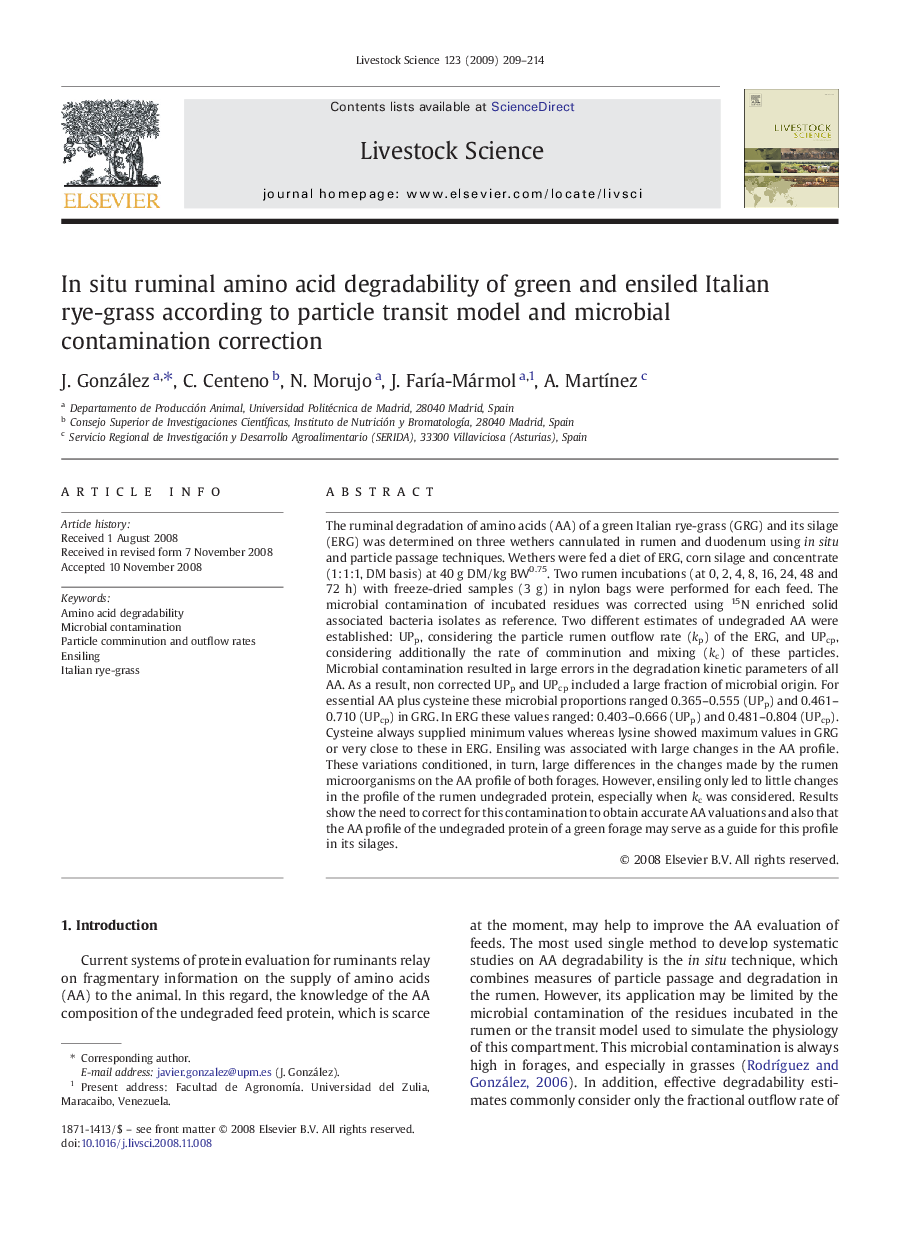| Article ID | Journal | Published Year | Pages | File Type |
|---|---|---|---|---|
| 2447974 | Livestock Science | 2009 | 6 Pages |
The ruminal degradation of amino acids (AA) of a green Italian rye-grass (GRG) and its silage (ERG) was determined on three wethers cannulated in rumen and duodenum using in situ and particle passage techniques. Wethers were fed a diet of ERG, corn silage and concentrate (1:1:1, DM basis) at 40 g DM/kg BW0.75. Two rumen incubations (at 0, 2, 4, 8, 16, 24, 48 and 72 h) with freeze-dried samples (3 g) in nylon bags were performed for each feed. The microbial contamination of incubated residues was corrected using 15N enriched solid associated bacteria isolates as reference. Two different estimates of undegraded AA were established: UPp, considering the particle rumen outflow rate (kp) of the ERG, and UPcp, considering additionally the rate of comminution and mixing (kc) of these particles. Microbial contamination resulted in large errors in the degradation kinetic parameters of all AA. As a result, non corrected UPp and UPcp included a large fraction of microbial origin. For essential AA plus cysteine these microbial proportions ranged 0.365–0.555 (UPp) and 0.461–0.710 (UPcp) in GRG. In ERG these values ranged: 0.403–0.666 (UPp) and 0.481–0.804 (UPcp). Cysteine always supplied minimum values whereas lysine showed maximum values in GRG or very close to these in ERG. Ensiling was associated with large changes in the AA profile. These variations conditioned, in turn, large differences in the changes made by the rumen microorganisms on the AA profile of both forages. However, ensiling only led to little changes in the profile of the rumen undegraded protein, especially when kc was considered. Results show the need to correct for this contamination to obtain accurate AA valuations and also that the AA profile of the undegraded protein of a green forage may serve as a guide for this profile in its silages.
